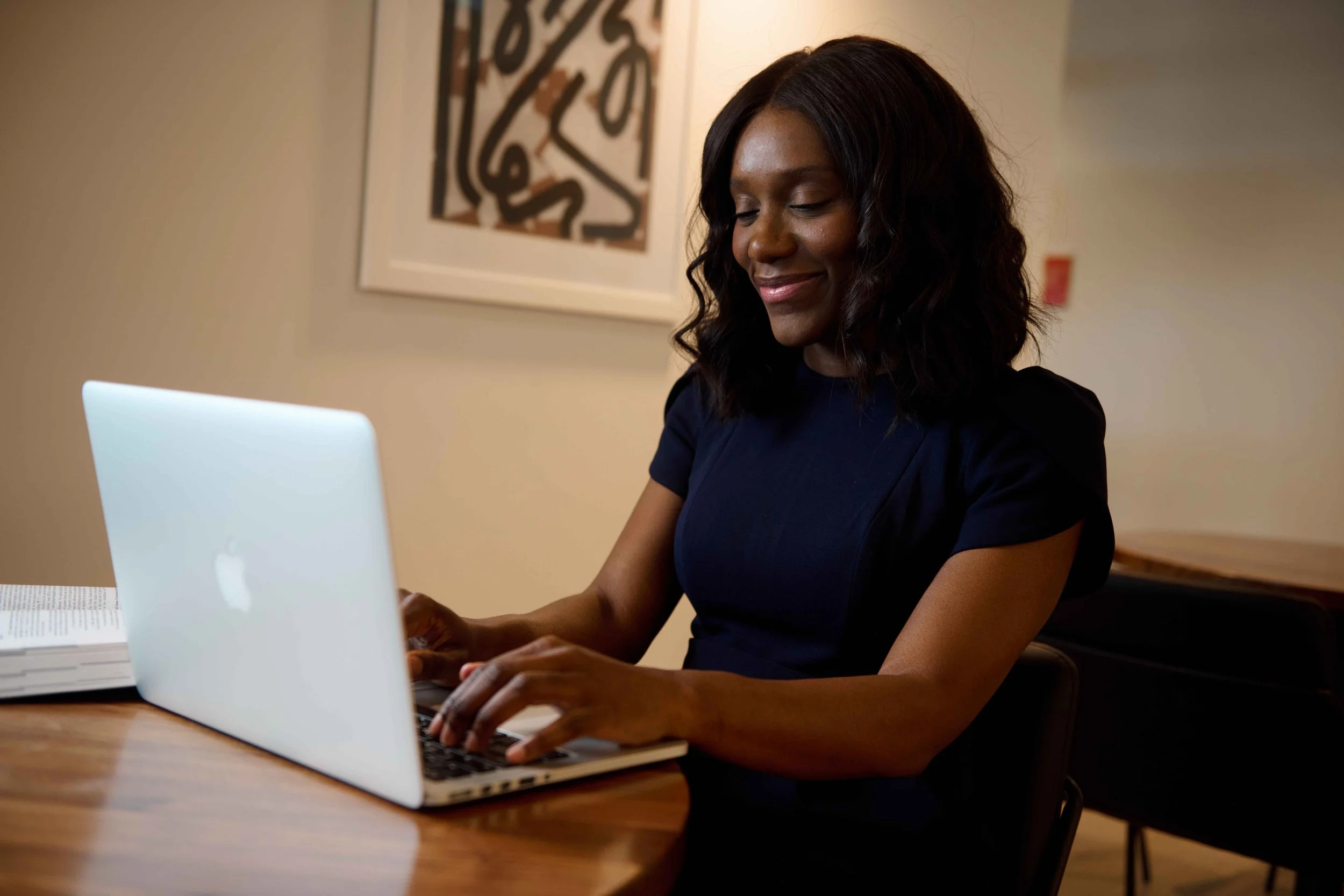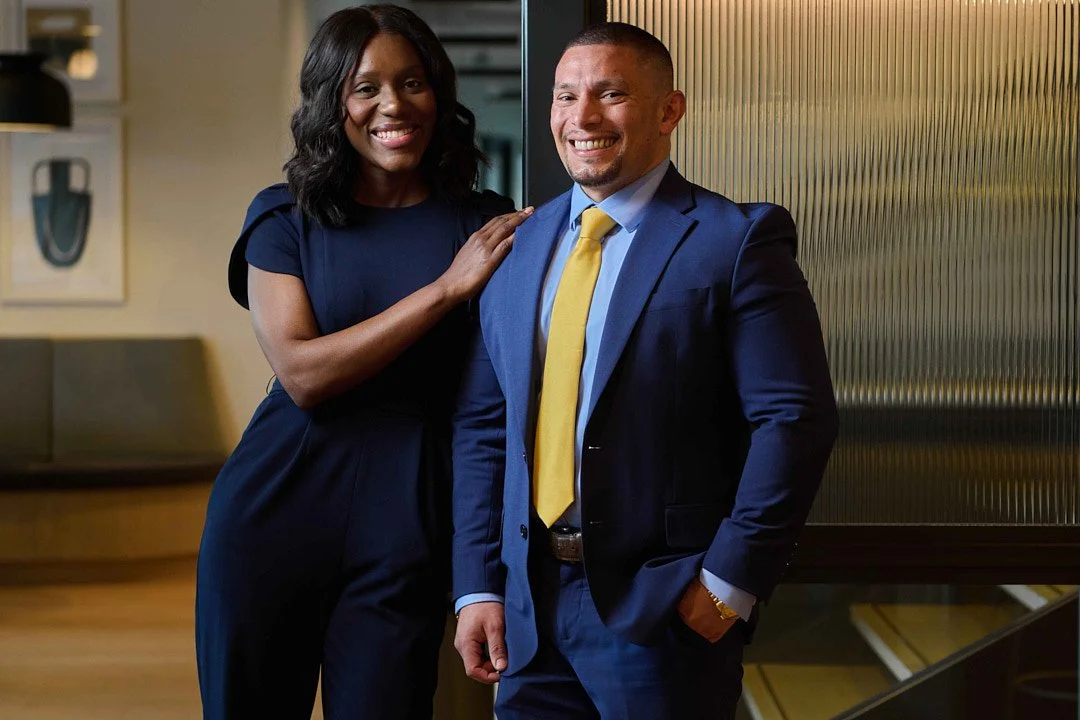Why crossed arms in a headshot sends the wrong message
Should i cross my arms in a photo?
We’ve certainly all seen this move before — a professional standing tall with arms crossed, chin up just a little too much. It’s meant to look strong and self-assured, a “power move”.
It’s actually sending the opposite message.
As a photographer, I call this blocking. It’s when something — your arms, or a prop, often a laptop — creates a physical barrier between you and the viewer. And whether you realize it or not, that barrier affects how people feel about you when they see your photo.
What the heck is “blocking” anyway?
Blocking is any pose or prop that visually separates you from your audience. It might be:
Crossing your arms (Real estate agents, Doctors,I’m looking at you!)
Holding an object directly in front of your torso
Sitting behind a laptop while looking at the camera. Different if the subject is engaged with the computer.
Folding your hands tightly across your chest
Sitting on the sofa with a pillow clutched to your body
In photography, this kind of body language creates a sense of distance making people feel closed off. The viewer feels like there’s something “in the way” — and that can make your image feel less inviting.
Arms folded, it’s often seen as a power move, it’s actually defensive.
Why Does Blocking Feel Defensive?
As humans we read body language naturally— even when looking at photos.
When we see someone crossing their arms, we subconsciously interpret it as “closed off” or “defensive.”
The same goes for objects between you and the viewer. A laptop, a desk, even a tightly held coffee cup can act as a psychological shield. Instead of feeling connection, we start to sense separation. There are other ways to use these props to your advantage.
This happens because of mirror neurons — the part of our brain that reacts to what we see in others. When someone looks open and relaxed, we feel open and relaxed. When they appear closed off, we respond with the same feeling.
In branding and headshots, that emotional first impression matters more than anything.
What we can do instead
The goal in any headshot or branding portrait is to look approachable, confident, and authentic. You can do this without using crossed arms or putting props between you and your audience.
Here are a few ways we can be more open:
Keep your arms naturally at your sides or lightly resting on a hip or chair.
Angle your body slightly instead of facing the camera straight on.
Keep space between your arms and torso — it conveys openness and energy. Simply decrease the distance between your elbow and your belt.
If your session involves props like a computer or desk, angle them aside or step around them.
Lean forward slightly — it communicates engagement and confidence.
Small adjustments can completely change how your audience feels about your image.
I don’t mind this pose because she’s engaged with the computer, showing her audience how she brainstorms ideas.
In the image above the subject does have a computer between her and us, but, in this case, we’re on the outside getting a snapshot of her routine. The purpose of this image is to show her audience how she brainstorms ideas to solver he clients problems. She’s engaged with the computer and showing us that process. I would like it less if she were typing while looking at the camera.
Showing open posture, her arm though across her chest, shows connection to her husband.
Open Body language builds trust
Your personal branding photos are your digital first impression. Before someone reads your bio or website, they’re already making judgments on how much they trust you.
When your posture feels open, your expression warm, and your hands visible (mostly in branding photos, I don’t like hands in a headshot), viewers instinctively feel like they can trust you.
That connection builds trust before you get a chance to meet.
That’s why I coach everyone on subtle posture and expression adjustments that help them look natural, confident, and open — the kind of leader people want to work with.
Finally
“Blocking” might feel like a small detail, but in photography, details are everything. A crossed arm or a misplaced laptop can quietly communicate defensiveness — while a small change in pose can convey warmth, leadership, and confidence. These all apply when you’re networking as well. It’s so tempting to cross your arms, instead, keep them at your side, or use your hands to make gestures while you speak.
So the next time you step in front of the camera, ask yourself: Is my body language inviting people in… or pushing them away?



